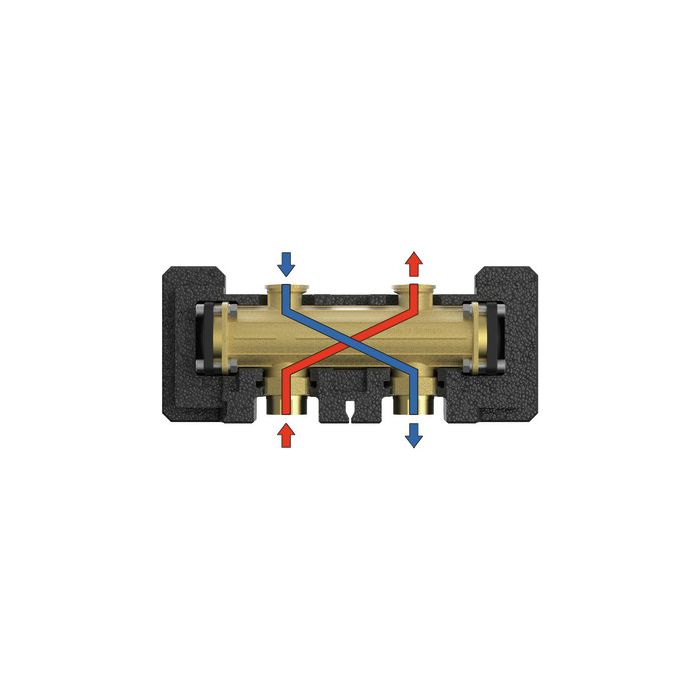- Best quality
- Quick assembly
- Longevity
HeatBloC®
Heating
technology
Hydraulic separator DN 25 (1")
The hydraulic separator causes a hydraulic separation of the connected circuits.
When a hydraulic separator is used, each circuit (the primary and the secondary one) must be equipped with a pump. Thus, a heat generation circuit/primary circuit can be provided with constant throughput and a consumer circuit/secondary circuit can be provided with variable flow. These are the typical functioning conditions for modern heating and air conditioning systems.
The figures on the adjoining side show three possible conditions of hydraulic stability.
Safety instructions The installation and commissioning as well as the connection of electrical components require technical knowledge commensurate with a recognised vocational qualification as a fitter for plumbing, heating and air conditioning technology, or a profession requiring a comparable level of knowledge [specialist]. The following must be observed during installation and commissioning: - relevant local and national regulations - accident prevention regulations of the professional association - instructions and safety instructions mentioned in these instructions.
CAUTION Personal injury and damage to property! The product must only be used in heating circuits filled with heating water according to VDI 2035 / Ö-Norm H 5195-1. The product must not be used in domestic water applications.
NOTICE Material damage due to mineral oils! Mineral oil products cause lasting damage to seals made of EPDM, whereby the sealant properties get lost. We do not assume liability nor provide warranty for damage to property resulting from sealants damaged in this way. - It is imperative to avoid that the EPDM sealing elements of the unit get in contact with substances containing mineral oils. - Use a lubricant based on silicone or polyalkylene and free from mineral oils, such as Unisilikon L250L and Syntheso Glep 1 of the Klüber company or a silicone spray.

